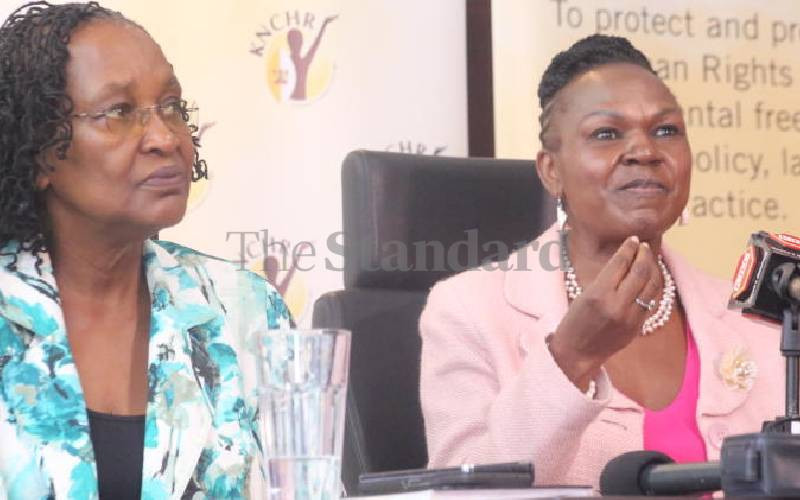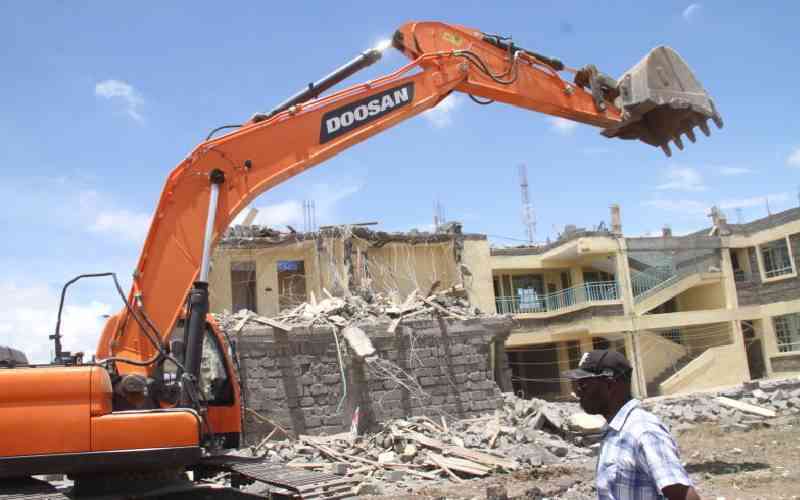By Kamukam Ettyang
On Saturday, we celebrated the Human Rights Day. December 10 was set aside to honour the United Nation’s General Assembly’s adoption and proclamation of the Universal Declaration of Human Rights.
This year’s celebrations came against a backdrop of controversial evictions and demolitions across Nairobi and its environs.
The demolitions are an affront to general human rights principles and more specifically, a smack in the face to the right to housing for all Kenyans. For a long time, evictions had been associated with informal settlements.
According to a report published by Kituo cha Sheria, evictions by State and private agencies were responsible for displacement of more than 20,000 households from informal settlements within a 9-month period in 2009 alone. Sporadic demolitions were carried out as the Government sought to clear land for its bypasses a few years ago but for the first time, evictions this year have hit the middle class population with brute met with outrage.
While we were treated to the spectacle of bulldozers clawing away investments by hundreds of hard working Kenyans, little attention was given to demolitions that rendered more than 4,000 households destitute in heavily populated slums such as Mitumba and Kiang’ombe. The tragedy is that the demolitions, particularly in Mitumba, were carried out in bad weather.
The Government-sanctioned exercise raises one pertinent question: To what extent are we committed to the fulfilment of our Constitution? Kenya is a signatory to international charters that commit the Government to protect everyone from forced evictions while taking human rights into consideration. As a matter of fact, Kenya is party to the International Covenant on Economic, Social and Cultural Rights and the International Covenant on Civil and Political Rights. In addition, it is also a party to the African Charter on Human Rights.
While it is appreciated that there are extraordinary instances that could only be resolved through evictions and relocation, these charters provide for mechanisms to ensure negotiated alternatives and suitable solutions are given. It is therefore unfortunate these provisions were not taken into account.
Resolution 43/181 by the UN General Assembly for instance, notes the primary obligation of the State to improve (rather than destroy) adequate housing. General comment 07 (1997) seems to further compel the State to refrain from forced evictions and ensure the law is enforced against its agents or any other third parties who carry out forced evictions.
As we passed the new Constitution, we in effect domesticated these conventions and treaties. Section 2(6) states that any treaty or convention ratified by Kenya shall form part of the law of Kenya under the Constitution. Section 43 further provides for the right to housing and reasonable standards of sanitation while section 21(2) asserts the State’s responsibility to put in place measures to achieve realisation of the rights guaranteed under section 43.
It is no secret that the demolitions were carried out in utter disregard of these provisions and due process. Much as the Government and its agencies presented valid arguments, residents’ rights were flouted, considering the manner the demolitions and subsequent evictions were carried out.
And as Justice Daniel Musinga, in petition case no 66 of 2010 noted, the protection of fundamental rights overrides the mandate of agencies tasked with controlling development. It is on this basis that communities such as Mitumba reaffirmed their confidence in our judicial systems when they were faced with eviction threats. But now, it is evident the Executive had failed to respect court decisions.
But even then, tremendous gains have been realised in the fight against forced evictions. In October last year, the Ministry of Lands in consultation with civil society and community groups, came up with the evictions and resettlement guidelines that stipulate a framework under which evictions should be carried.
These guidelines are now contained in the draft Evictions and Resettlement Guidelines Bill and are premised on genuine consultations, reasonable notice as well as socio-economic and environmental impact mitigation through relocation action plans.
Let us take time and ponder over the right to housing and what this really means to Kenyans.
Stay informed. Subscribe to our newsletter
—The writer is Communications and Publications Officer, Pamoja Trust
 The Standard Group Plc is a
multi-media organization with investments in media platforms spanning newspaper
print operations, television, radio broadcasting, digital and online services. The
Standard Group is recognized as a leading multi-media house in Kenya with a key
influence in matters of national and international interest.
The Standard Group Plc is a
multi-media organization with investments in media platforms spanning newspaper
print operations, television, radio broadcasting, digital and online services. The
Standard Group is recognized as a leading multi-media house in Kenya with a key
influence in matters of national and international interest.
 The Standard Group Plc is a
multi-media organization with investments in media platforms spanning newspaper
print operations, television, radio broadcasting, digital and online services. The
Standard Group is recognized as a leading multi-media house in Kenya with a key
influence in matters of national and international interest.
The Standard Group Plc is a
multi-media organization with investments in media platforms spanning newspaper
print operations, television, radio broadcasting, digital and online services. The
Standard Group is recognized as a leading multi-media house in Kenya with a key
influence in matters of national and international interest.









